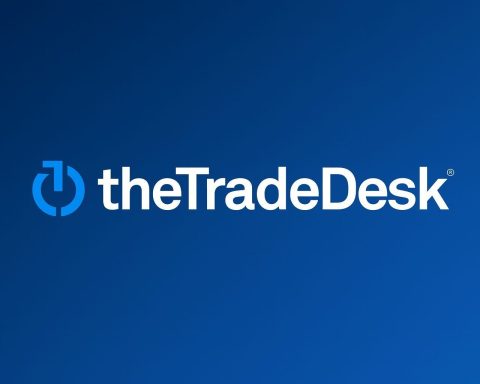On Sunday, November 23, 2025, Oracle Corporation (NYSE: ORCL) heads into the new trading week under intense scrutiny.
The stock has slid more than 40% from its September all‑time high, capping a brutal November that saw back‑to‑back plunges and a wave of headlines about an AI bubble,” rising debt, and a controversial $500 billion Stargate” AI infrastructure project. [1]
At the same time, fresh news today (Nov. 23) shows:
- Institutional investors like Charles Schwab and Coldstream Capital increasing their stakes in Oracle
- A Motley Fool piece calling Oracle a top growth stock down 33% to buy hand over fist”
- A new Benzinga/Fortune‑linked report where a Yale antitrust expert questions whether the OpenAI–SoftBank–Oracle Stargate” project may violate Sherman and Clayton Act rules
- An InsiderMonkey/Jim Cramer piece framing Oracle as a legitimate question” for investors in the current AI shake‑out [2]
Here’s a full breakdown of where ORCL stock stands today and what the November 23, 2025 news flow means for investors.
Oracle stock price snapshot on November 23, 2025
Because November 23 falls on a Sunday, U.S. markets are closed. The most recent full session for Oracle was Friday, November 21.
Key numbers:
- Last close (Nov. 21, 2025):$198.76 per share
- After‑hours indication: around $199.00
- Day’s range (Nov. 21):$193.55 – $208.31
- Previous close (Nov. 20):$210.69 – meaning a single‑day drop of about 5.7% on Friday
- Volume: ~44.8 million shares, roughly 3x the typical daily volume [3]
Looking slightly further back:
- Oracle fell 6.6% on Nov. 20 and is now down roughly 24% in November alone, on track for its worst month since May 2002. [4]
- Shares have dropped over 40% from a record high around $345.72 in early September, when enthusiasm over Oracle’s AI‑driven cloud growth and massive contract backlog was peaking. [5]
- The 52‑week range now stretches from roughly $118.86 to $345.72, with ORCL sitting in the lower half of that band. [6]
On a valuation basis (using Friday’s close):
- Market cap: about $566 billion
- Trailing P/E: ~46x
- PEG ratio: ~3.0
- Debt‑to‑equity: about 3.3, reflecting Oracle’s aggressive debt‑funded infrastructure build‑out [7]
These numbers explain why Oracle has become the market’s favorite AI euphoria vs. AI hangover test case.
All the Oracle stock news hitting on November 23, 2025
1. Big money keeps buying: Schwab and Coldstream boost positions
Two new 13F‑style updates published today highlight fresh institutional interest in Oracle after the sell‑off:
- Charles Schwab Investment Management
- Increased its Oracle position by about 0.5% in the second quarter, adding roughly 51,179 shares.
- Now owns 11,026,370 ORCL shares, or about 0.39% of the company, valued at approximately $2.41 billion at the time of the filing. [8]
- Coldstream Capital Management
- Lifted its ORCL stake by 24.9% in Q2.
- Now holds 88,836 shares after acquiring 17,687 additional shares, a position worth about $19.4 million at filing time. [9]
The same MarketBeat coverage notes that:
- Roughly 42% of Oracle’s float is held by institutional investors and hedge funds.
- Insiders still own about 41% of the stock, with notable insider selling (over 200,000 shares sold last quarter) as the share price spiked earlier in 2025. [10]
Takeaway: Despite the vicious drawdown, large asset managers are still accumulating ORCL, suggesting that at least some long‑term investors see the slump as a buying opportunity rather than the end of the AI story.
2. Motley Fool: Oracle as a top growth stock down 33%” and potential multibagger
A new article syndicated via Nasdaq and AOL today, titled 1 Top Growth Stock Down 33% to Buy Hand Over Fist (Hint: It May Become a Multibagger)”, singles out Oracle as that stock. [11]
Key points from the piece:
- It notes that Oracle stock has been sliding since it released its fiscal 2026 first‑quarter results in September, even though those results were objectively strong.
- Shares hit a 52‑week (and all‑time) high on September 10, the day after Oracle reported:
- Revenue of about $14.9 billion, up 12% year over year
- Cloud revenue of ~$7.2 billion, up around 28%
- A massive $455 billion backlog of remaining performance obligations (RPO), up 359% year over year [12]
- The article argues that the roughly one‑third pullback since that September peak looks disconnected from Oracle’s fundamentals and that the company’s AI‑driven cloud trajectory could still make ORCL a long‑term multibagger for patient investors.
Takeaway: Among growth‑oriented commentators, the narrative today is that Oracle’s business story hasn’t cracked—only the stock price has.
3. Jim Cramer & InsiderMonkey: Oracle’s a legitimate question”
Another fresh piece this morning from InsiderMonkey, summarized on Finviz as Oracle’s (ORCL) a Legitimate Question,” Says Jim Cramer, revisits Cramer’s recent commentary on Oracle. [13]
The article groups Oracle among high‑profile AI names that surged on hype and then ran into a show me” moment as investors began demanding clearer proof that multi‑hundred‑billion‑dollar AI spending plans will translate into sustainable profits.
While the piece doesn’t frame Cramer as outright bearish, the headline underscores that:
- Oracle has become a case study for how far AI valuations can stretch,
- and a legitimate question” about whether Wall Street pushed some AI winners too far, too fast.
Takeaway: The Cramer‑centric coverage adds to a weekend drumbeat: Oracle is no longer a straightforward AI darling—it’s a lightning‑rod debate stock.
4. Yale antitrust expert flags Oracle’s $500B Stargate” project
Perhaps the most consequential policy‑centric Oracle headline today comes from Benzinga, summarizing a report first highlighted by Fortune. [14]
A few key details:
- The Stargate Project is a proposed $500 billion AI infrastructure initiative spearheaded by OpenAI, SoftBank, and Oracle, with support from Nvidia and Microsoft. It aims to build a network of massive U.S. data centers dedicated to training and running advanced AI models like ChatGPT. [15]
- Madhavi Singh, a researcher at Yale’s Thurman Arnold Project, argues that the joint venture could stifle competition” by concentrating critical AI infrastructure in the hands of a few powerful companies.
- Her upcoming paper suggests the project could raise red flags under both the Sherman Act and the Clayton Act, especially given support from the Trump administration and the sheer scale of the spending involved. [16]
- Singh warns that the arrangement might lead to higher prices and reduced innovation if left largely unsupervised by regulators.
So far, regulators have shown limited public interest in the deal, but today’s coverage puts Stargate squarely on the antitrust radar.
Takeaway: Oracle’s biggest AI opportunity—Stargate—could also become a regulatory overhang, injecting long‑term uncertainty into the bullish AI thesis that pushed ORCL to record highs.
5. Macro lens: Reuters sees Oracle at the heart of an AI‑driven sell‑off
In a broader markets piece published today, Reuters highlights how the holiday season is starting with unusual turbulence as investors reassess both AI spending and the odds of a near‑term Fed rate cut. [17]
Among its examples, Reuters singles out:
- Heavy declines in Oracle and other AI‑themed names such as Palantir, after a months‑long rally driven by AI hype and expectations of easier monetary policy.
- The idea that despite strong earnings from Nvidia, the market is no longer blindly rewarding anything AI”—instead, investors are becoming more selective and more nervous about overextended valuations. [18]
Takeaway: In the eyes of macro strategists, Oracle has shifted from AI hero to AI risk barometer—its volatility is now shorthand for the market’s changing mood on the entire AI trade.
How Oracle got here: from AI superstar to bubble poster child
To understand today’s drama, it helps to rewind.
Blockbuster earnings and a vertical stock chart
Two earnings beats earlier this year set the stage for Oracle’s meteoric rise:
- Fiscal 2025 Q4 (reported June 2025)
- Revenue: about $15.9 billion, up 11% year over year
- Adjusted EPS:$1.70, ahead of expectations
- Cloud services and license support: about $11.7 billion, +14% YoY
- Management raised its 2026 revenue growth forecast and projected cloud growth accelerating above 40%, sending shares up over 7% after hours. [19]
- Fiscal 2026 Q1 (quarter ended August 31, reported Sept. 9, 2025)
- Total revenue:$14.9 billion, up 11–12% YoY
- Cloud revenue: about $7.2 billion, up ~28%
- OCI (Cloud Infrastructure) revenue: roughly $3.3 billion, up 55% YoY
- RPO (backlog):$455 billion, up 359% year over year, reflecting huge multi‑year AI and cloud contracts [20]
Oracle also told investors it expects OCI revenue to grow 77% this fiscal year to $18 billion and to ramp toward $144 billion over the next four years, mostly on already‑booked business. [21]
Analysts responded with a deluge of price‑target hikes—some up to the $300–$400 range—and the stock rocketed more than 30% in the days following Q1 results, ultimately hitting that $345+ all‑time high in September. [22]
Then came the comedown: debt, bonds and AI bubble talk
Starting in October, the narrative flipped:
- Debt binge & bond worries. Oracle raised $18 billion in project finance for a giant New Mexico data‑center campus tied to the Stargate initiative, on top of tens of billions in other debt offerings. [23]
- Axios reports that a recent $3.5 billion 30‑year Oracle bond has dropped roughly 8% since issuance, trading near 65 cents on the dollar, as credit spreads widened faster than the broader investment‑grade market—a sign bond investors are nervous about AI infrastructure risks. [24]
- Investopedia notes that Oracle’s total debt has now pushed above $100 billion, and that ORCL has become something of a poster child” for investor anxiety about a potential AI bubble. [25]
- MoneyWeek estimates that as of mid‑November, Oracle’s shares had fallen about 29% in a single month, giving back all the post‑OpenAI/Stargate rally and then some, as investors reassessed whether a $300 billion+ AI infrastructure plan (and talk of raising up to $38 billion more in debt) is really sustainable. [26]
By late last week, Investor’s Business Daily reported that Oracle’s slide had hit 24% for November and that Friday’s drop below roughly $199 took the stock under a key 200‑day moving average, marking its worst month since 2002. [27]
Bottom line: In just two months, Oracle traveled from AI superstar with sky‑high expectations to AI cautionary tale, even though its underlying cloud metrics remain strong.
Fundamentals today: still a fast‑growing cloud and AI platform
Despite the stock‑price turmoil, Oracle’s operational story remains robust:
- Growth & profitability
- Latest reported quarter (Q1 FY26) saw revenue up ~12% and EPS up mid‑single digits year over year.
- Oracle’s net margin sits above 20%, with return on equity north of 70%, boosted by leverage and high‑margin software and cloud services. [28]
- Cloud acceleration
- Cloud now accounts for nearly half of revenue, led by fast‑growing OCI and Oracle’s suite of SaaS applications.
- Management projects OCI revenue growth of 77% this year, and a multi‑year trajectory that would more than 7x infrastructure revenue over five years—numbers that, if achieved, would justify a substantial premium valuation. [29]
- Healthcare & interoperability: fresh TEFCA milestone
Late last week, Oracle announced that Oracle Health Information Network has been officially designated a TEFCA Qualified Health Information Network (QHIN). [30] This designation:- Lets Oracle Health’s hospital and health‑system clients connect to a national health‑data exchange through a single, OCI‑powered hub, without extra setup or fees.
- Supports a more complete patient record across payers, providers and government agencies.
- Strengthens Oracle’s case that it can fuse EHR data, interoperability and AI—a key plank of the company’s long‑term healthcare strategy. [31]
- Capital returns
- Oracle currently pays a $2.00 annual dividend (about a 1% yield at current prices) with a payout ratio near 46%, leaving room for both reinvestment and buybacks. [32]
- Analyst view
- According to MarketBeat data, Oracle holds a Moderate Buy” consensus, with 3 Strong Buys, 27 Buys, 10 Holds and 2 Sells, and an average price target around $322—roughly 60%+ above Friday’s close. [33]
In other words: The fundamental picture still screams high‑growth AI infrastructure and cloud platform”, but the market is trying to reconcile that with high leverage, massive capex and elevated valuation multiples.
What today’s mix of bullish and bearish news means for ORCL
Taken together, the November 23 headlines paint a conflicted picture:
Bullish signals
- Smart money is buying the dip. Charles Schwab, Coldstream and several other large asset managers have added to Oracle positions, even after the slide. [34]
- Long‑term growth thesis intact (so far). Oracle’s multi‑year AI and cloud backlog remains huge, and the company continues to win recognition—like the TEFCA QHIN designation—that deepens its moat in critical verticals such as healthcare. [35]
- Some commentators see a bargain. Motley Fool and other growth‑oriented outlets frame Oracle as a top growth stock down 33%” and a candidate to become a multibagger if its AI and cloud bets pay off. [36]
Bearish or cautionary signals
- Debt and bond‑market jitters. Oracle’s rising leverage, sliding bond prices and heightened activity in its credit default swaps are clear signs that fixed‑income investors are nervous about the scale and timing of its AI investments. [37]
- AI bubble worries & volatility. Multiple outlets—from Investopedia to MoneyWeek to Reuters—now describe Oracle as a poster child for AI‑bubble concerns, pointing to its 40%+ slide from the highs and historically bad monthly performance. [38]
- Regulatory overhang via Stargate. The Yale antitrust critique introduces a new, non‑trivial risk: if regulators take interest in Stargate, Oracle could face deal modifications, remedies, or delays that affect its AI infrastructure roadmap. [39]
Net effect: As of November 23, 2025, Oracle stock sits in a classic high‑beta crossroads—caught between a still‑powerful AI growth engine and a market that’s suddenly demanding proof, prudence and policy clarity.
What to watch next for Oracle stock
Investors tracking ORCL into year‑end may want to keep an eye on:
- Next earnings report (Q2 FY26)
- Due around mid‑December, with guidance currently pointing to EPS of $1.27–$1.31.
- Any signs of slowing cloud momentum, delayed deals, or rising costs could reinforce bearish sentiment; conversely, another strong OCI print could validate the bull case. [40]
- Regulatory reaction to Stargate
- Watch for comments from the FTC, DOJ or lawmakers as the Yale analysis circulates and media coverage expands. Even an informal inquiry could shift sentiment. [41]
- Bond and CDS markets
- Continued weakness in Oracle’s bonds or widening credit spreads would signal persistent debt concerns; stabilization would suggest the market is growing more comfortable with its funding plans. [42]
- Customer and partner updates
- New AI or cloud deals—especially multi‑cloud partnerships or major healthcare wins tied to the QHIN designation—could help shift the narrative back toward growth. [43]
- Institutional positioning and insider activity
- Additional 13F filings, plus any big insider buys or sales, will be closely parsed for clues as to how the people closest to the story are reacting. [44]
Bottom line
As of November 23, 2025, Oracle stock is in the eye of the AI storm:
- The company continues to post double‑digit revenue growth, rapid cloud expansion and major strategic wins like Stargate contracts and TEFCA QHIN status.
- Yet its share price has been cut by more than 40% in two months, as markets question the sustainability of AI megaprojects, worry about ballooning debt, and now see potential antitrust friction ahead. [45]
For investors, Oracle has become less of a simple AI growth play and more of a high‑stakes balancing act between:
- Huge long‑term cloud and AI opportunity, and
- Short‑ to medium‑term risks around leverage, regulation, and sentiment.
Disclosure & disclaimer:
This article is for informational and news purposes only and does not constitute investment, legal or tax advice. Stock prices and valuations can change quickly, especially in volatile sectors like AI and cloud computing. Always do your own research, review Oracle’s latest SEC filings and official press releases, and consider consulting a licensed financial advisor before making any investment decisions related to ORCL.
References
1. www.investors.com, 2. www.marketbeat.com, 3. finance.yahoo.com, 4. www.investors.com, 5. www.investors.com, 6. www.marketbeat.com, 7. www.marketbeat.com, 8. www.marketbeat.com, 9. www.marketbeat.com, 10. www.marketbeat.com, 11. www.nasdaq.com, 12. investor.oracle.com, 13. finviz.com, 14. www.benzinga.com, 15. www.benzinga.com, 16. www.benzinga.com, 17. www.reuters.com, 18. www.reuters.com, 19. www.reuters.com, 20. investor.oracle.com, 21. s23.q4cdn.com, 22. newsquawk.com, 23. www.reuters.com, 24. www.axios.com, 25. www.investopedia.com, 26. moneyweek.com, 27. www.investors.com, 28. www.marketbeat.com, 29. s23.q4cdn.com, 30. www.oracle.com, 31. www.stocktitan.net, 32. www.marketbeat.com, 33. www.marketbeat.com, 34. www.marketbeat.com, 35. www.stocktitan.net, 36. www.nasdaq.com, 37. www.axios.com, 38. www.investopedia.com, 39. www.benzinga.com, 40. www.marketbeat.com, 41. www.benzinga.com, 42. www.axios.com, 43. www.stocktitan.net, 44. www.marketbeat.com, 45. www.investopedia.com









